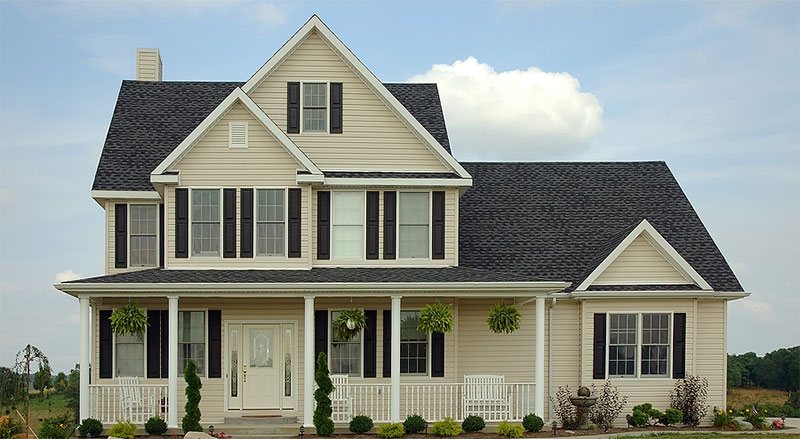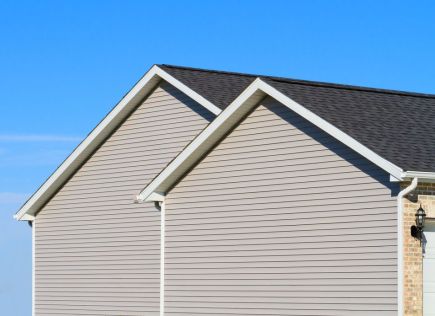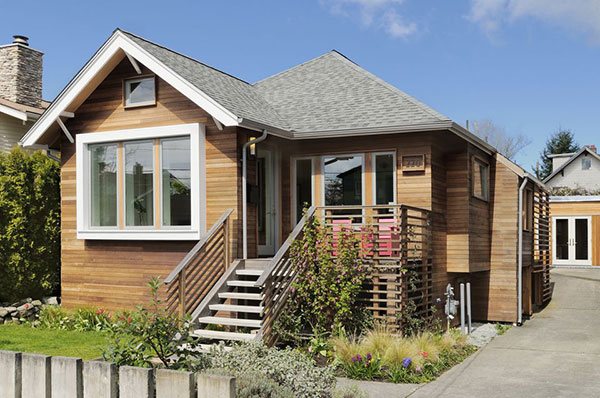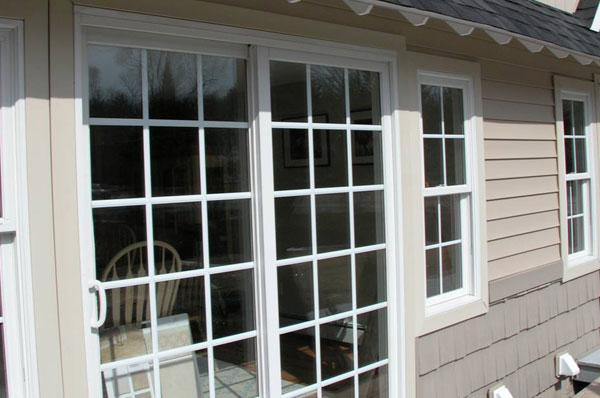Seamless Remodeling: Siding
Siding offers a great way to add color, definition, and protection to the exterior of your living space. A multitude of options are at available to help you create the perfect façade for your home. While aesthetics are always an important factor in home improvement decisions, it is also wise to consider the material’s durability, water resistance, and versatility. No matter which material you choose for your siding, when it is installed by the professionals at Seamless Remodeling it is sure to look and perform beautifully for decades to come!

Choosing the Right Siding
When selecting house siding (also known as cladding), there are five basic issues to consider, besides the initial cost:
- Water Resistance. Water-resistant types of siding will have longer life spans
- Energy Efficiency. Check the R-value rating for energy savings and understand what will be needed as far as insulation beneath the siding you pick
- Aesthetics Your siding will be in full view as you come and go, so make sure it is beautiful to you
- Versatility Make sure the siding has the versatility to meet the varied needs of your specific project. If there are aspects of your home’s exterior that will make using a particular type of siding more challenging than others, make sure you understand what the added costs or necessary adjustments will be
- Durability. Does your siding of choice have the strength to resist temperature shifts present in your climate? How does it stand up to everyday wear and tear?
Seamless Remodeling: Siding – Common Questions
What should I do next about failing house siding?
Repair or replace worn siding before it causes structural damage. Most importantly, figure out what is causing the problem. Most of the time you will find that moisture is the prime culprit.
When is the best time of year to install new siding?
Most siding companies work year-round, but if you are looking for a deal, fall and winter are usually the best times since not many people choose to have their siding replaced during the low season. Not only are deals more readily available, but usually the job is completed quicker because they have fewer projects to tend to.
How long does it take to install siding?
Certainly, this will depend on the type of siding, but as a rule you can usually expect it to take two weeks. This time includes removal, prep, time to add insulation, and the install of the new siding, and any last modifications such as painting or trim work. Don’t worry with having your exterior home exposed.
Is it okay to add vinyl siding over existing siding?
Check with the experts at Seamless Remodeling to determine whether you can install vinyl siding over your home’s existing siding. Depending on how the particular brand is fastened, this can be a possibility.
Seamless Remodeling: Siding – Choosing The Right Option for You
You have plenty of choices when it comes to exterior siding and given the range of options it makes sense to get a good understanding of each before making any buying decisions. The first step should be to get familiar with the various materials that are available. Below you will find a list of siding choices to consider and the pros and cons of each.
Vinyl Siding
Vinyl siding is made from Polyvinyl Choloride (PVC) and offers a relatively inexpensive yet durable option. However. there are different levels of quality and grades, with higher grade vinyls and molded products coming in at higher price points. Vinyl also offers a variety of looks: shakes, shingles, even stone veneers.

Advantages of Vinyl Siding:
- Relatively durable product
- Low cost depending on grade of vinyl chosen
- Low maintenance – no painting required
- Available in a variety of colors
- Available in several forms that mimic wood siding (lap boards, shakes, shingles)
- Won’t rot or fade
- Greater ability to flex and absorb energy compared to metal siding which can dent
Disadvantages of Vinyl Siding:
- Cheaper, lower grade vinyls = poorer performance
- Can crack if struck hard enough particularly if the vinyl has no backing
- Susceptible to fading in sunlight
- No ability to change the color of the house (not paintable)
- Seams visible where lap siding pieces come together
- No ability for custom colors like you have with paintable surfaces (you’re limited to the colors they make)
- Can be difficult to successfully match a “patch” repair piece unless you have extra material
Wood Siding
Wood siding is natural, attractive, and comes in a variety of forms but it also requires upkeep. Wood can be painted or stained and some types of wood like cedar can be left untreated to age and patina over time.

Advantages of Wood Siding:
- Offers long life and natural looks
- Can be painted/stained so color can be changed later on if desired
- Eco-friendly (renewable resource and biodegradable)
- Multiple styles are available like clapboard, shingles, shakes, and vertical boards for a range of looks
Disadvantages of Wood Siding:
- Requires paint/stain more frequently than other forms of paintable siding
- Flammable unless treated with flame-retardant
- Natural product that’s susceptible to rot, insects and other natural forms of decay (though cedar and other woods have natural decay resistance)
- More overall maintenance required compared to other materials
- Can be more expensive depending on type of wood, form used (individual shakes vs. boards) and required labor
Wood Cedar Siding
Cedar siding is great options for that traditional American look of clapboard or shingle style siding. Cedar siding is typically made from Western Red Cedar, but sometimes White Cedar is used. It can be applied in the form of horizontal lap panels or traditional shingles or “shakes.” It can be painted or treated with stain, oil, or even left untreated.
As Wood Cedar Siding Contractor serving homeowners in Westchester County, NY and Fairfield County, CT, we want to make things easier. We are proud to work with Maibec Wood Siding. With Maibec you can achieve stunning effects with the right mix and match of various types of profiled siding (horizontally and vertically), or even combine profiled siding with white cedar shingles.
Fiber Cement Siding
Fiber cement is made from sand, portland cement, wood fiber and other additives. It forms a stable (doesn’t shrink or expand very much) and durable product that accepts paint well. It comes in various forms like panels, boards and shingles and it’s made to mimic the various forms of natural wood siding. Fiber cement is available in pre-primed and painted versions.

Advantages of Fiber Cement Siding:
- Durable product that’s impact resistant, won’t rot and is impervious to moisture, insects and pests
- Made in styles that mimic traditional wood siding like shake and lap
- Dimensionally stable – won’t expand/contract to the degree that other materials like wood will allowing paint to adhere longer
- Fireproof
- Available in both primed and pre-painted versions
- Long warranty
Disadvantages of Fiber Cement Siding:
- More expensive than typical vinyl products but expense is dependent on style of fiber cement chosen (shakes, panels, etc.)
- Pre-painted fiber cement is more expensive than the primed unpainted option
- Product is heavy and cutting produces lots of dust making installation more challenging
- Visual similarity to real wood siding varies by individual due to some fiber cement products being thinner than wood (some products made thinner to counteract the heavier weight of fiber cement)
Seamless Remodeling: Siding
Now that you know your options and have an understanding of the basics, call the pros at Seamless Remodeling and see why – for more than 25 years – the majority of our customers call us for their every home improvement need.
Why Choose Us?
-

5 Star Promise
-

EXCELLENT VALUE
-

PARTNERSHIP PROCESS
-

LEADING WARRANTIES
-

TRUSTED REPUTATION



